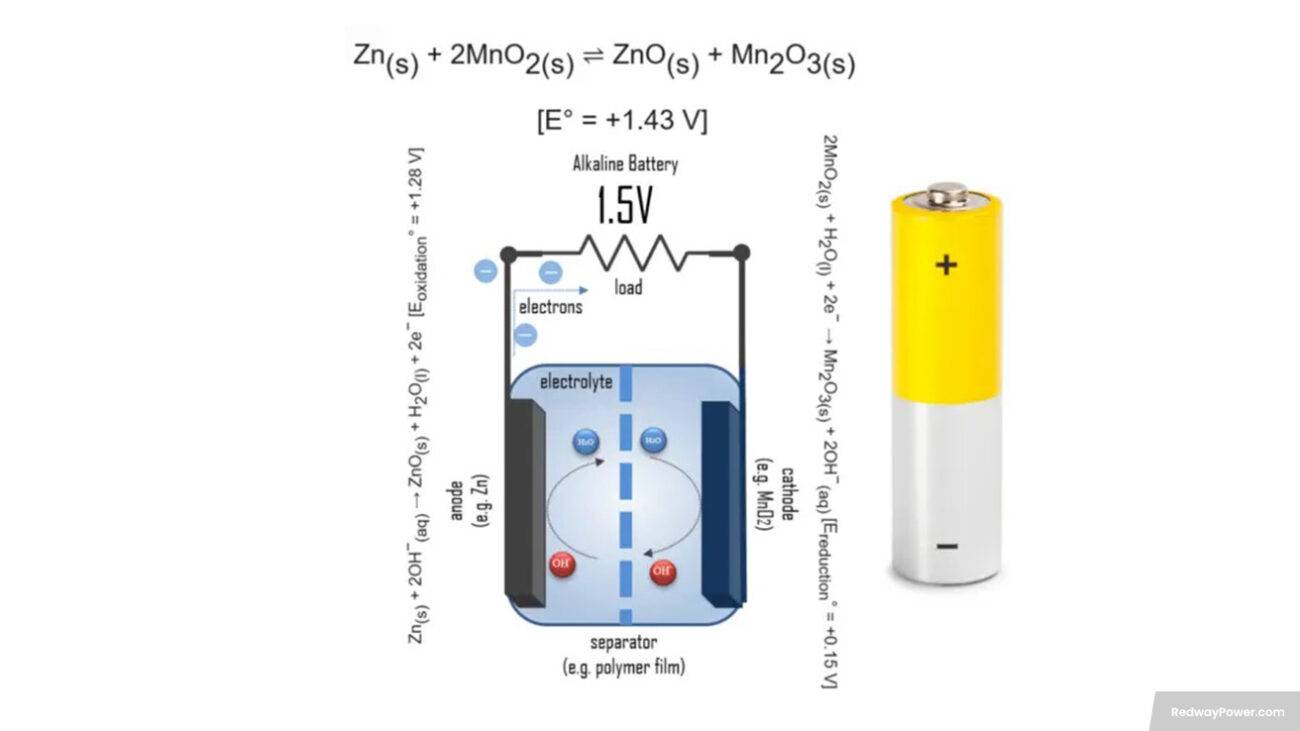A car battery typically operates at 12 volts, providing the necessary voltage to power the vehicle’s electrical components. This voltage is sufficient for starting the engine and running the various electrical systems of the car, such as the lights and radio
Get Your Custom B2B Quote for Car Starter Battery: Click HERE.
What is a volt and its significance in car batteries?
A volt is a unit of electric potential and represents the electrical potential difference between the positive and negative terminals of a car battery. The voltage is significant as it determines the battery’s capacity to deliver electrical power for starting the engine and operating the vehicle’s electrical systems. Understanding the voltage of a car battery is important for the proper functioning and performance of the vehicle.
-
Definition of a volt: A volt is the unit of electric potential difference, representing the electrical potential between the positive and negative terminals of a car battery.
-
Significance in car batteries: The voltage of a car battery determines its capacity to deliver electrical power. It provides the necessary energy to start the engine and power the vehicle’s electrical systems.
The volt is a unit that measures electric potential difference and plays a crucial role in car batteries. Understanding the significance of voltage in car batteries helps ensure proper functioning and performance of the vehicle’s electrical systems.
Factors that affect voltage in car batteries
Factors that affect voltage in car batteries include temperature, state of charge, and age. Higher temperatures can increase the voltage, while lower temperatures can decrease it. The state of charge, which reflects the amount of charge stored in the battery, also influences the voltage. As a car battery ages, its voltage may decrease. Understanding these factors is important for monitoring the health and performance of car batteries.
Several factors can influence the voltage of a car battery. Let’s explore the key factors that affect the voltage in car batteries and their significance.
-
Temperature: The temperature can impact the voltage of a car battery. Higher temperatures tend to increase the voltage, while lower temperatures can decrease it.
-
State of charge: The state of charge refers to the amount of charge stored in the battery. The voltage of a car battery can vary depending on its state of charge. A fully charged battery typically exhibits a higher voltage.
-
Age of the battery: As a car battery ages, its voltage may decrease. This gradual decrease in voltage over time is a natural part of the battery’s aging process.
Various factors can impact the voltage of a car battery, influencing its overall performance. One crucial factor is temperature; extreme cold or heat can affect the chemical reactions inside the battery, affecting its voltage output. Another critical element is the age of the battery – as it gets older, its ability to maintain voltage diminishes.
The charging system of your vehicle also plays a significant role in regulating the battery’s voltage levels. If there are issues with components like the alternator or voltage regulator, it can lead to fluctuations in voltage output. Additionally, how often and for how long you drive your car can affect the battery’s charge level and subsequently its voltage.
Regular maintenance and proper care are essential to ensure that these factors do not significantly impact your car battery’s performance.
Average voltage of a car battery
Factors that affect voltage in car batteries include temperature, state of charge, and age. Higher temperatures can increase the voltage, while lower temperatures can decrease it. The state of charge, which reflects the amount of charge stored in the battery, also influences the voltage. As a car battery ages, its voltage may decrease. Understanding these factors is important for monitoring the health and performance of car batteries.
-
Temperature: The temperature can impact the voltage of a car battery. Higher temperatures tend to increase the voltage, while lower temperatures can decrease it.
-
State of charge: The state of charge refers to the amount of charge stored in the battery. The voltage of a car battery can vary depending on its state of charge. A fully charged battery typically exhibits a higher voltage.
-
Age of the battery: As a car battery ages, its voltage may decrease. This gradual decrease in voltage over time is a natural part of the battery’s aging process.
Understanding the factors that affect the voltage in car batteries, such as temperature, state of charge, and age, is important for monitoring the health and performance of the battery. By considering these factors, car owners can maintain their batteries and ensure reliable vehicle operation.
When to check the voltage of your car battery?
For the most accurate reading, it is recommended to check the battery voltage twelve hours after turning off the vehicle. This waiting period allows any surface charge to dissipate, providing a more reliable measurement of the battery voltage. By checking the voltage of your car battery, you can assess its health and determine if it needs charging or replacement.
-
Timing: For the most accurate reading, it is advisable to check the voltage of your car battery twelve hours after turning off the vehicle. This waiting period allows any surface charge to dissipate, ensuring a more reliable measurement.
-
Procedure: Use a multimeter or voltmeter to measure the voltage across the battery terminals. Ensure proper connections and follow safety precautions while performing the measurement.
-
Assessment: The measured voltage can provide insights into the battery’s state of charge and health. Comparing the voltage to the manufacturer’s specifications helps determine if the battery requires charging or replacement.
Checking the voltage of your car battery is an essential part of maintaining your vehicle’s health. To do this, you will need a multimeter, a tool used to measure electrical current. Start by turning off your car and allowing it to sit for at least an hour to let the battery stabilize.
Locate the battery terminals – the positive (red) and negative (black) leads attached to the battery. Take your multimeter and set it to DC Voltage mode, usually indicated by a “V” with straight lines above it. Connect the red probe from the multimeter to the positive terminal and then connect the black probe to the negative terminal.
Readings between 12.4-12.6 volts indicate that your battery is fully charged, while readings below 12 volts may mean it needs recharging or replacing soon. It’s also crucial to check for loose connections or corrosion on the terminals which can affect voltage levels.
Get Your Custom B2B Quote for Car Starter Battery: Click HERE.
How to measure the voltage of a car battery?
To measure the voltage, use a digital multimeter or voltmeter. Set the meter to the DC voltage setting, and connect the positive probe to the positive terminal and the negative probe to the negative terminal of the battery. The meter will display the voltage reading, indicating the voltage of the car battery. This simple procedure helps assess the battery’s condition and ensure proper vehicle operation.
-
Equipment needed: You will need a digital multimeter or voltmeter to measure the voltage. Make sure the meter is set to the DC voltage setting.
-
Connection process: Connect the positive (red) probe of the meter to the positive terminal of the battery and the negative (black) probe to the negative terminal. Ensure proper connections and a secure grip.
-
Voltage measurement: Once the probes are properly connected, the meter will display the voltage reading. This reading indicates the voltage of the car battery, which helps assess its condition and performance.
Measuring the voltage of a car battery using a digital multimeter or voltmeter is a straightforward process. By following the correct procedure, car owners can assess the battery’s condition and ensure proper vehicle operation.
Proper maintenance for maintaining voltage levels
Proper maintenance is crucial for ensuring your car battery maintains optimal voltage levels. To start, regularly check the battery terminal connections to ensure they are clean and free of any corrosion. Dirty terminals can impede the flow of electricity, affecting voltage output.
In addition, make sure to secure the battery properly in place to prevent vibrations that can lead to internal damage and decreased voltage. Inspect the battery casing for any signs of physical damage or leakage which can impact its performance over time.
Furthermore, avoid draining your battery excessively by turning off all lights and accessories when the engine is not running. Consider investing in a trickle charger if you don’t use your vehicle frequently to keep the battery charged at all times.
By implementing these simple maintenance practices, you can help prolong the life of your car battery and maintain its voltage within the optimal range for reliable starting power!
When to replace a car battery?
Knowing when to replace your car battery is crucial for ensuring your vehicle starts reliably. One sign that it may be time for a new battery is if your car struggles to start or the engine cranks slowly. Additionally, if you notice dimming headlights or electronics acting erratically, it could indicate a failing battery.
Extreme temperatures can also impact the lifespan of your battery. In hot climates, batteries tend to degrade faster due to increased chemical reactions inside the cells. On the other hand, cold weather can cause batteries to lose power more quickly.
Regularly checking the voltage of your car battery can give you insight into its health. A fully charged battery should read around 12.6 volts; anything significantly lower may signal a problem.
If in doubt, have a professional perform a load test on your battery to determine its condition accurately. Remember that preventive maintenance and timely replacement can save you from unexpected breakdowns on the road.
FAQs about Car Battery Volts
When to measure the voltage of a car battery? The voltage of a car battery should ideally fall between 12.6 and 12.8 volts. If the voltage exceeds 12.8, it is advisable to drain the battery slightly by using the electrical components before starting the engine. Conversely, if the voltage falls below 12.6, the battery may require charging. Regularly checking the voltage helps ensure optimal battery performance and extends its lifespan.
What is the typical voltage of a car battery?
-
Voltage specification: A car battery typically operates at a voltage of 12 volts. This voltage is specifically designed to meet the power requirements of the vehicle’s electrical system.
-
Powering electrical components: The 12-volt voltage output of a car battery is essential for providing the necessary energy to power various electrical components, such as lights, radio, and ignition system.
-
Starting the engine: The 12-volt voltage of a car battery is crucial for starting the engine. It supplies the power needed to turn the starter motor and ignite the combustion process.
The typical voltage of a car battery is 12 volts, ensuring compatibility with the vehicle’s electrical system and providing the necessary power to start the engine. By understanding the typical voltage, car owners can ensure proper functioning of the battery and reliable vehicle operation.
When should I check the voltage of my car battery?
It is advisable to check the voltage of your car battery periodically as part of regular maintenance. It becomes particularly important when you observe signs of battery-related issues or before long trips or extreme weather conditions. By checking the voltage, you can assess the battery’s health and determine if it needs charging or replacement.
-
Regular maintenance: It is recommended to check the voltage of your car battery periodically as part of routine maintenance. This helps ensure the battery’s health and performance.
-
Signs of battery-related issues: If you experience slow engine cranking, dim headlights, or difficulty starting the vehicle, it is a good idea to check the battery voltage. Low voltage can indicate a battery-related problem.
-
Before long trips or extreme weather conditions: Before embarking on long trips or during extreme weather conditions, it is advisable to check the battery voltage. This helps ensure that the battery is in good condition and can handle the additional demands.
Checking the voltage of your car battery periodically, especially when you notice signs of battery-related issues or before long trips or extreme weather conditions, is crucial for maintaining reliable vehicle operation. By monitoring the battery voltage, you can identify potential problems early and take necessary actions to ensure the battery’s health and performance.
Get Your Custom B2B Quote for Car Starter Battery: Click
HERE.
How do I measure the voltage of my car battery?
To measure the voltage, use a digital multimeter or voltmeter. Set the meter to the DC voltage setting, and connect the positive probe to the positive terminal and the negative probe to the negative terminal of the battery. The meter will display the voltage reading, indicating the voltage of the car battery. This simple procedure helps assess the battery’s condition and ensure proper vehicle operation.
-
Equipment needed: You will need a digital multimeter or voltmeter to measure the voltage. Make sure the meter is set to the DC voltage setting.
-
Connection process: Connect the positive (red) probe of the meter to the positive terminal of the battery and the negative (black) probe to the negative terminal. Ensure proper connections and a secure grip.
-
Voltage measurement: Once the probes are properly connected, the meter will display the voltage reading. This reading indicates the voltage of the car battery, which helps assess its condition and performance.
Measuring the voltage of your car battery using a digital multimeter or voltmeter is a straightforward process. By following the correct procedure, car owners can assess the battery’s condition and ensure proper vehicle operation.
What is considered a fully charged voltage for a car battery?
A fully charged car battery typically reads between 12.4 and 12.9 volts. This voltage range indicates that the battery is fully charged and ready to provide the necessary power to start the engine and operate the vehicle’s electrical components. Checking the battery voltage helps assess its state of charge and ensures optimal performance.
-
Voltage range: A fully charged car battery generally reads between 12.4 and 12.9 volts. This voltage range indicates that the battery is at its optimal charge level and ready to deliver the required power.
-
Powering the engine: The fully charged voltage range ensures that the battery has enough energy to start the engine and power the vehicle’s electrical components effectively.
-
State of charge: Checking the battery voltage helps assess its state of charge. If the voltage falls below the recommended range, it may indicate a low charge and the need for charging or battery maintenance.
Monitoring the voltage of a car battery and ensuring it falls within the typical fully charged voltage range helps maintain optimal battery performance. By regularly checking the voltage, car owners can assess the battery’s state of charge and take appropriate actions to ensure reliable vehicle operation.
Can extreme temperatures affect car battery voltage?
Yes, extreme temperatures can affect car battery voltage. In cold weather, the battery’s voltage output decreases due to slowed chemical reactions. Conversely, high temperatures can increase the battery’s voltage temporarily. These temperature-related fluctuations can have an impact on the battery’s performance and lifespan.
-
Cold weather: In cold temperatures, the chemical reactions within the battery slow down, reducing its voltage output. This can make it more challenging for the battery to provide the necessary power to start the engine.
-
High temperatures: On the other hand, high temperatures can temporarily increase the voltage of a car battery. However, prolonged exposure to high temperatures can lead to accelerated battery degradation and a decrease in overall performance.
-
Impact on performance: Temperature-related fluctuations in voltage can affect the battery’s ability to deliver power consistently and efficiently. It is important to monitor the battery’s voltage and take appropriate measures to ensure optimal performance in extreme temperature conditions.
Extreme temperatures can influence the voltage of a car battery, with cold weather reducing voltage output and high temperatures potentially increasing it temporarily. By understanding these effects and taking appropriate precautions, car owners can optimize the performance and lifespan of their car batteries.
What are the safety precautions when measuring car battery voltage?
When measuring car battery voltage, it is crucial to take safety precautions. Ensure the engine is off and the area is well-ventilated. Wear protective gloves and safety glasses. Calibrate the voltmeter or multimeter correctly. Avoid short-circuiting the battery terminals or causing sparks. Following these safety measures ensures a safe and accurate measurement of the car battery voltage.
-
Engine and ventilation: Ensure the vehicle’s engine is turned off and perform the measurement in a well-ventilated area to prevent any potential hazards.
-
Protective gear: Wear protective gloves and safety glasses to protect yourself from battery acid and other potential risks.
-
Proper calibration: Make sure the voltmeter or multimeter is properly calibrated and set to the correct voltage measurement settings for accurate readings.
-
Avoid short-circuits and sparks: Take precautions to avoid short-circuiting the battery terminals or causing sparks during the measurement process, as this can lead to accidents or damage.
By following these safety precautions, you can safely and accurately measure the voltage of your car battery. Ensuring a safe measurement process is essential for maintaining personal safety and preventing any damage to the vehicle or battery.
How often should I check my car battery voltage?
It is generally recommended to check the voltage at least twice per year, or every 6 months or 6,000 miles. Regularly monitoring the battery voltage helps assess its health and performance, ensuring optimal operation.
-
Recommended frequency: It is advisable to check the voltage of your car battery at least twice per year, or every 6 months or 6,000 miles. This regular monitoring helps ensure the battery’s health and performance.
-
Assessing battery health: Checking the voltage allows you to assess the battery’s state of charge and identify any potential issues or deterioration in performance.
-
Ensuring optimal operation: By regularly monitoring the battery voltage, you can take timely actions such as charging or replacing the battery, ensuring reliable vehicle operation.
Regularly checking your car battery voltage, preferably at least twice per year, helps ensure its health and performance. By monitoring the voltage, you can assess the battery’s condition, identify any potential issues, and take necessary actions to ensure optimal battery operation.
What does a voltage reading below 12.6 volts indicate?
A voltage reading below 12.6 volts in a car battery suggests a lower state of charge. It indicates that the battery may require charging to reach its optimal voltage range. Monitoring the voltage helps assess the battery’s condition and ensures reliable performance. A lower voltage reading can also indicate potential battery issues or a need for maintenance.
-
Lower state of charge: A voltage reading below 12.6 volts suggests that the battery is not fully charged. It may require charging to reach its optimal voltage range and deliver optimal performance.
-
Need for charging: When the voltage reading falls below 12.6 volts, it is an indication that the battery needs to be charged to restore its charge level and ensure reliable operation.
-
Potential battery issues: A consistently low voltage reading below 12.6 volts may indicate potential battery issues, such as reduced capacity or age-related deterioration. In such cases, further inspection or battery maintenance may be necessary.
Monitoring the voltage of a car battery is important to assess its state of charge and overall condition. A voltage reading below 12.6 volts suggests a lower state of charge and the need for charging. By paying attention to the voltage reading, car owners can ensure optimal battery performance and address any potential battery issues in a timely manner.
Why is monitoring car battery voltage important?
Monitoring car battery voltage is crucial for assessing battery health, identifying potential issues, and ensuring reliable vehicle operation. Regular voltage monitoring helps car owners take timely actions such as charging or replacing the battery, preventing unexpected failures and ensuring optimal performance.
-
Assessing battery health: Regularly monitoring the voltage of a car battery allows you to assess its health and identify any potential issues. This helps prevent unexpected battery failures and ensures optimal performance.
-
Identifying potential issues: Changes in voltage readings can indicate potential battery issues, such as a low charge or deterioration in performance. Monitoring the voltage helps catch these issues early and take appropriate actions.
-
Ensuring reliable vehicle operation: By monitoring the battery voltage, car owners can address any potential battery problems before they lead to unexpected failures. This helps ensure reliable vehicle operation and prevents inconvenient breakdowns.
Monitoring the voltage of a car battery is essential for maintaining battery health and ensuring reliable vehicle operation. By regularly checking the voltage, car owners can identify potential issues, take timely actions, and prevent unexpected battery failures.
Is voltage the only factor to consider for a healthy car battery?
While voltage is an important factor, it is not the only one to consider for a healthy car battery. Factors such as the battery’s state of charge, capacity, internal resistance, and overall condition also contribute to battery health. Monitoring these factors helps ensure optimal battery performance and longevity.
-
State of charge: Monitoring the battery’s state of charge helps determine its current level of energy storage and availability.
-
Capacity: The battery’s capacity indicates its ability to deliver the required power over a specific period. Monitoring capacity ensures optimal battery performance.
-
Internal resistance: The battery’s internal resistance affects its ability to deliver power efficiently. Monitoring internal resistance helps identify potential issues and ensure optimal battery performance.
-
Overall condition: Assessing the battery’s overall condition, including physical appearance and signs of damage, helps determine its health and longevity.
While voltage is an important factor, considering other aspects such as state of charge, capacity, internal resistance, and overall condition is crucial for maintaining a healthy car battery. By monitoring these factors, car owners can ensure optimal battery performance and longevity.
Get Your Custom B2B Quote for Car Starter Battery: Click
HERE.
How is wattage calculated in relation to car batteries?
To calculate wattage in relation to car batteries, use the formula: Wattage = Amps x Voltage. For instance, a standard car battery rated at 45 amps per hour, when computed over a 20-hour period, can deliver 2.25 amps at an average of 12V, resulting in a wattage of 540W. By multiplying the amps by the voltage, you can determine the wattage output of a car battery.
What is the difference between voltage and amperage in car batteries?
The difference between voltage and amperage in car batteries lies in their functions. Voltage represents the electrical potential difference or the force that moves electrons, while amperage, also known as current, refers to the flow of electrons through a conductor. Voltage can be likened to the ‘pressure’ of electricity, while amperage is the volume of electricity generated. Understanding this distinction is crucial for comprehending the behavior and capabilities of car batteries.
How many cells do 12-volt batteries have?
A 12-volt battery is composed of six cells connected in series. Each cell generates 2 volts of electricity. By connecting these cells together, a 12-volt battery is formed. These batteries are commonly used in various applications, including automotive and marine industries, to provide the necessary power for starting engines and running electrical systems.
Why are most vehicle batteries either 12 or 6 volts?
Most vehicle batteries are either 12 or 6 volts. The standard 12-volt batteries are widely used because they work well for most applications. They are compatible with the electrical systems of vehicles and provide sufficient power. 6-volt batteries are utilized in specific applications, such as older vehicles or specialized equipment like golf carts. The choice of voltage depends on the specific requirements and compatibility with the electrical systems of the vehicle.
How much electricity do car batteries produce?
On average, car batteries typically last between 3 to 4 years. However, the lifespan of a car battery can vary depending on factors such as usage, climate, and maintenance. Some batteries may last as long as 6 years, while others may need to be replaced after only a year or two. It’s important to consider these factors and monitor the battery’s performance to determine when a replacement is needed.
Post Views: 405












